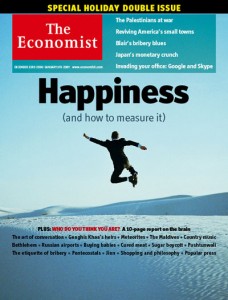 Time magazine writes about the first crop of graduates from a new master’s program at the Medill School of Journalism that aims to blend programming and journalism skills. Medill is the most prominent of several academic institutions that are dabbling with crossover programs that seek to make the news more accessible and multi-dimensional through technology. One outcome of the students’ labors has been NewsMixer (right), a site that enhances the reader commenting experience by enabling contributors to start discussions, post quick tweet-like messages or write thoughtful letters to the editor about stories or elements within stories. The text is annotated with these comments and questions and Facebook Connect integration takes the conversations to other venues.
Time magazine writes about the first crop of graduates from a new master’s program at the Medill School of Journalism that aims to blend programming and journalism skills. Medill is the most prominent of several academic institutions that are dabbling with crossover programs that seek to make the news more accessible and multi-dimensional through technology. One outcome of the students’ labors has been NewsMixer (right), a site that enhances the reader commenting experience by enabling contributors to start discussions, post quick tweet-like messages or write thoughtful letters to the editor about stories or elements within stories. The text is annotated with these comments and questions and Facebook Connect integration takes the conversations to other venues.
Most of the students in the Medill program are techies. They spend three quarters learning the craft of traditional reporting and then team up with students from the traditional journalism side to develop an application that delivers information in a new way, enhances the reader experience or makes journalists more productive.
Speaking of new ways of presenting news, a group of senators began working on a bill to overhaul of the US health care system this week, but NPR turned the camera around on the swarm of lobbyists who filled the hearing room. The radio network published photos of the scene, annotated with information about the lobbyists pictured there. And it’s asking readers to contribute information about people the staffers couldn’t identify.
Also, take a look at Newsy, an online video site that aggregates perspectives on important stories. Jessi Stafford, a recent University of Missouri graduate and Newsy intern, told us about it. “Newsy.com creates videos that analyze and synthesize news coverage of important global issues from multiple sources. Its method of presenting the ways in which different media outlets around the world are covering a story lends itself well to understanding complexities.” Newsy aggregates coverage from all kinds of news outlets and presents it in a packaged video format similar to what you might see on the evening news. A newsy “anchor” guides the viewer through a variety of perspectives and attempts to explain what’s going on using these multiple sources. We’re not sure it’s easier to follow than a print digest, but it’s certainly different. See an example below.
You Are What You Tweet
The Australian media watchdog site New Matilda comments upon the ethical dilemmas presented by Twitter. It tells the story of Sydney Morning Herald technology writer Asher Moses, who was publicly embarrassed recently over comments he made about a sex scandal involving a prominent former rugby star. Moses’ comments were made during his off hours, but hasn’t stopped many Australians from questioning the journalist’s impartiality.
Julie Posetti wonders whether Twitter’s humanizing capacity is a blessing or a curse for journalists. Twitter “merges the professional and the personal, the public and the private — blurring the lines of engagement for journalists trained to be didactic observers and commentators rather than participants in debates and characters within stories,” she writes. Twitter makes journalists more accessible and thus more appealing, Posetti notes, but should people who are supposed to be rigidly unbiased be allowed to share their views on anything? Moses says he’s made up his mind. “He’s now decided to restrict his Tweeting to purely work-related messages.” BTW, it’s worth checking out Posetti’s Top 20 Tips for Journo Twits.
Miscellany
Small and mid-sized newspapers may be a bargain in the current market, according to a study by brokerage firm Cribb, Greene & Associates. Despite the fact that smaller papers haven’t suffered the steep losses of their big-city brethren, many publishers are putting them up for sale out of fear of losing further asset value. Asking prices are between four and eight times earnings before income tax, depreciation and amortization (EBITDA), compared to 10 to 14 times EBITDA a few years ago, the firm said. This is despite the fact that revenue declines at these papers have been only about half that of major metro dailies.
At least two potential buyers for the Boston Globe have emerged, and owner New York Times Co. is doing everything it can to welcome them. Former advertising executive Jack Connors and private equity investor Stephen Pagliuca have received permission to team up on a bid. There is also reportedly a rival bid by former Globe executive Stephen Taylor, whose family originally sold the paper to the Times Co. for $1.1 billion in 1993. The Times Co. sweetened the pot by announcing that buyers would only have to assume $51 million worth of pension obligations for the Globe and another $8 million for the Worcester Telegram instead of the full $200 million+ for which the current owners are liable. In an unrelated event, the paper’s editorial page editor, Renée Loth, announced she is leaving the paper after 24 years for unspecified new adventures.
 Circulation at the Los Angeles Times passed one million in 1961. Last month it passed one million again – only headed the other way. Edward Padgett remembers. Meanwhile, the revolving door continues in the top editorial ranks: John Arthur (left) is out as executive editor after 23 years at the paper. A memo from Editor Russ Stanton makes it clear that the decision wasn’t Arthur’s.
Circulation at the Los Angeles Times passed one million in 1961. Last month it passed one million again – only headed the other way. Edward Padgett remembers. Meanwhile, the revolving door continues in the top editorial ranks: John Arthur (left) is out as executive editor after 23 years at the paper. A memo from Editor Russ Stanton makes it clear that the decision wasn’t Arthur’s.
Microsoft CEO Steve Ballmer says media companies should stop waiting for the market to bounce back because it isn’t going to bounce back. In the future, “All content consumed will be digital, we can [only] debate if that may be in one, two, five or 10 years,” he told the Cannes Lions International Advertising Festival, where he was named media person of the year. What’s more, advertising will continue to migrate online, leaving a smaller pie for traditional media companies to share.
Gannett Co. will lay off 1,400 people, not the 4,500 that was rumored. Still, that brings to 5,400 the total layoffs in the past year, which is about 12% of the company’s workforce. Gannett Blog is tracking the reductions, both announced and unannounced, from reports submitted by employees at local Gannett offices. As of this morning, the count is up to 205.
 Magazine publishers might want to catch the next flight to London to find out what the heck they’re doing right at The Economist Group. The publisher of The Economist just reported a 26% jump in profit on a 17% increase in sales in the first quarter. Circulation grew 6.4% to nearly 1.4 million while Economist.com ad revenue leapt 29% and page views climbed 53%. Don’t these people know the media is dying? Interestingly, The Economist enjoys a much hipper image in the US than it does in its native land. In fact, the company just launched a new video ad that portrays a young man walking on high wires across a European city, seeking to highlight its appeal to young readers. The average Economist reader in the US is 39 years old. In the UK, where the magazine has a more serious image, the average if 47.
Magazine publishers might want to catch the next flight to London to find out what the heck they’re doing right at The Economist Group. The publisher of The Economist just reported a 26% jump in profit on a 17% increase in sales in the first quarter. Circulation grew 6.4% to nearly 1.4 million while Economist.com ad revenue leapt 29% and page views climbed 53%. Don’t these people know the media is dying? Interestingly, The Economist enjoys a much hipper image in the US than it does in its native land. In fact, the company just launched a new video ad that portrays a young man walking on high wires across a European city, seeking to highlight its appeal to young readers. The average Economist reader in the US is 39 years old. In the UK, where the magazine has a more serious image, the average if 47.
Quebec’s second-largest newspaper is killing its Sunday edition. The publisher of La Presse said it made more sense to discontinue the unprofitable Sunday edition than to “pick away at all or four editions.” Sunday papers apparently aren’t very profitable in Quebec, in contrast to the US, where they are sometimes the only profitable issue. If anyone from Canada cares to comment on why this is the case, we’re sure US readers would be interested to know.
And Finally…
 John Rooney is one weird dude. Or at least he has a unique hobby. Not content to grow bonsai trees like everyone else, Rooney wraps miniature crashed cars around them. “Each model is unique, and individually disassembled, cut, melted, filed, smashed, then reassembled to replicate a real fender bender. Some models might work perfectly with a bonsai you already have, but generally you should expect to create a new bonsai around the vehicles.” Rooney’s work is available in some Boston-area stores and you can sample some of his finer pieces at this web gallery.
John Rooney is one weird dude. Or at least he has a unique hobby. Not content to grow bonsai trees like everyone else, Rooney wraps miniature crashed cars around them. “Each model is unique, and individually disassembled, cut, melted, filed, smashed, then reassembled to replicate a real fender bender. Some models might work perfectly with a bonsai you already have, but generally you should expect to create a new bonsai around the vehicles.” Rooney’s work is available in some Boston-area stores and you can sample some of his finer pieces at this web gallery.
Comments
This entry was posted on Friday, July 3rd, 2009 at 9:52 am and is filed under Facebook, Google, Hyper-local, Paywalls, Solutions. You can follow any responses to this entry through the RSS 2.0 feed. Both comments and pings are currently closed.



[…] As a result, the site also shows some of the irony in our current troubles. Check out the following paragraphs from this morning’s post: […]
Sunday papers in Canada came late. I remember them starting when I was kid, some 30 or so years ago.
Here in Canada it’s the Saturday paper that is large. That edition tends to be the bread and butter of the newspaper industry.
Also, the National Post is cutting their Monday edition: http://www.cbc.ca/consumer/story/2009/04/29/nationalpost-monday-editions.html
I think the power twitter has to break down the boundary between the private and the professional might be a good thing for journalism in general. The very image of the journalist as “didactic observers and commentators rather than participants in debates and characters within stories” has always been a deception and it only leads to an implicit level of dishonesty in journalism that is unavoidable while the “objective disengaged observer” myth continues. We are all involved, we are all characters within the stories we witness and write. The position of a commentator is always a dishonest position. This does not mean we give up on standards, but we do give up on the idea that we would even want a disengaged observer to provide us with the story, such an observer wouldn’t be able to even understand what they are supposed to report on. There are some great interviews with top journalists about the future of journalism at http://www.ourblook.com/component/option,com_sectionex/Itemid,200076/id,8/view,category/#catid69 which I have found useful on these subjects.